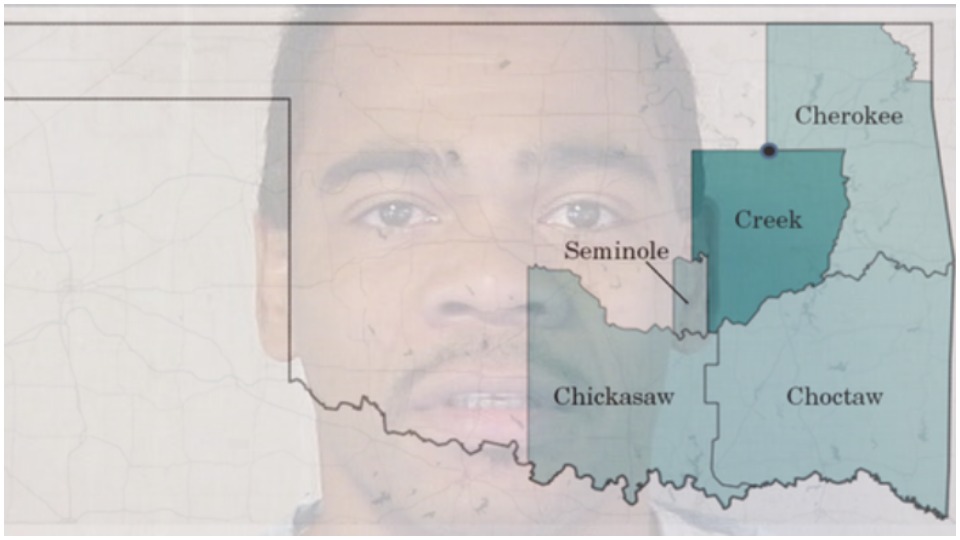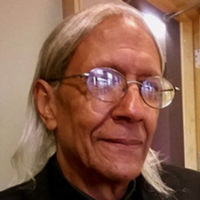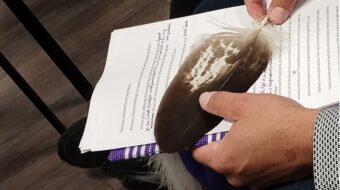
All of Indian Country is waiting on the U.S. Supreme to do what is morally and legally right and return to reservation status the lands of the forcibly removed southern nations, the “Five Civilized Tribes”—Cherokees, Muscogee Creeks, Choctaws, Seminoles, and Chickasaws—in Eastern Oklahoma. These are lands that were illegally taken from those nations in 1907 when Oklahoma attained statehood. Raw coercion was used by the federal government in the theft of this vast area from the tribal domains of those five nations. This was in the most flagrant violation of sacred treaties with the United States.
The legal impetus for the restoration of the eastern half of the state to the Indigenous entities is spearheaded by the case of Carpenter v. Murphy. A short history of this case was reviewed previously in People’s World, so I will just add some additional facts in this regard and append a further legal analysis.
In 2000, an Oklahoma jury sentenced a Muscogee Creek Nation (MCN) citizen Patrick Murphy to death for the murder of another MCN member, George Jacobs. The case made its way through the state appeals process and Murphy subsequently filed a federal habeas corpus petition and was assigned federal public defender Lisa McCalmont, who was also a geologist and well versed in land title law. She thought that Oklahoma may not have jurisdiction over this matter due to federal Indian law defining “Indian Country.”
A succinct historical background of tribal history in Oklahoma is in order. In 1866, in the wake of the Civil War, in which all of the “Five Civilized Tribes” were involved, Congress set new reservation boundaries under post-Civil War treaties with all of the five nations. The MCN, under its reservation boundary established by treaty, is composed of three million acres in eastern Oklahoma, including most of the city of Tulsa. The reservation lands of all these nations total over 10 million acres and cover nearly all of eastern Oklahoma.
From 1898 to 1906, under the Curtis Act of 1898, the federal government dismantled the governments of all the five nations in preparation for the establishment of Oklahoma statehood in 1906. By 1907, when Oklahoma was admitted to the Union, all the tribal governing bodies, including tribal governments and tribal courts, had been abolished. The tribal nations and their reservations were “legally” dissolved, dis-established, and dismantled in blatant disregard of the treaties that were “the law of the land.”
But this was not the end of the story as determined by federal Indian law. Under a longstanding Supreme Court precedent, an Indian reservation shall not be dis-established without compelling statutory evidence of Congressional intent to dismantle a given reservation. Further, under federal law 18 U.S.C. Sec. 1151(a), any crime committed by or against a citizen of a Native American nation within a tribe’s reservation is under the jurisdiction of the federal government. Native American reservations and Indian allotments are defined as “Indian Country.”
Although the Murphy case raises the reservation issue that is specific to the MCN, the Court’s ruling would also be applicable to the Cherokee, Choctaw, Chickasaw, and Seminole Nations, as all have similar histories with the state of Oklahoma. In fact, this case could go even further and have tremendous impact nationally affecting other Indigenous nations and lands throughout the United States.
McCalmont, the public defender, asserted that the crime scene could be part of an Indian allotment. Research disclosed that the land in question had originally been allotted to a citizen of the MCN. That extant ownership would make it Indian Country and place the crime under federal jurisdiction by an 1885 federal statute, the Major Crimes Act, which has exclusive authority over serious crimes committed by Native Americans in Indian Country. Therefore, Oklahoma would have no jurisdiction over Murphy, and his conviction would have to be set aside.
Murphy went back to court maintaining that claim and another that went even further and has potentially earth-shaking impact for the state of Oklahoma. Even if the crime did not occur on allotment land, his petition contended it still took place in Indian Country, and this was astounding to all those unfamiliar with the oftentimes seemingly arcane complexities of federal Indian Law. Murphy’s legal team argued that all of the surrounding land was still part of the MCN reservation guaranteed in the Treaty of 1866. This case went to the Tenth Circuit, which ruled that it couldn’t find any statute ending the reservation. Neither could it find any Congressional intent to abolish the reservation. The reservation still existed!
The Tenth Circuit Court decision cited the groundbreaking 1983 Supreme Court precedent of Solem v. Bartlett (1984), which held that the opening up of reservation lands for settlement to non-Indians does not constitute the required Congressional intent to dis-establish reservation boundaries. Therefore, the Tenth Circuit found that all three million acres of the MCN reservation—whether owned by Indians, non-Indians, state or city governments, or the federal government—was still “Indian Country.” Under the Major Crimes Act, Creek citizen Murphy’s conviction was void, and he was entitled to be retried in federal court. The Supreme Court granted certiorari in May 2018 and agreed to hear the case.
The case was heard on oral argument in November 2018 and was scheduled to have a decision issued on June 27, 2019. But to the disappointment of all of Indian Country on that date, Chief Justice John Roberts announced that the Court would re-hear the case during its next term which would begin in October 2019. This was a shock to Indian law experts and legal observers as Murphy is presently the oldest case on the docket without a decision. This wait surpasses the record previously set in Dollar General Corporation v. Mississippi Band of Choctaw Indians, which took 200 days to resolve.
Could it be the esteemed Supreme Court is contracting a case of the proverbial “cold feet ”?
On oral argument in November, the Court seemed more concerned with the potential collateral effects of the case—including taxation, criminal law jurisdiction (there are over 3,000 Native Americans in Oklahoma jails), business and property law, and municipal regulations—than deciding in favor of the MCN and the actual rule of law. This concern was palpably indicated by the questions asked by the justices. Many legal pundits believe that the Court is not going to disrupt the long-settled allocation of authority which refers to the reservation as having been long settled by non-Indians with concomitant results. This would be against the rule of law and the precedent set by Solem.
It is hoped that the justices have the courage, fortitude, and integrity to render justice in this case in accordance with the rule of law as held by the Supreme Court’s own Indian law precedent-setting decision.












Comments